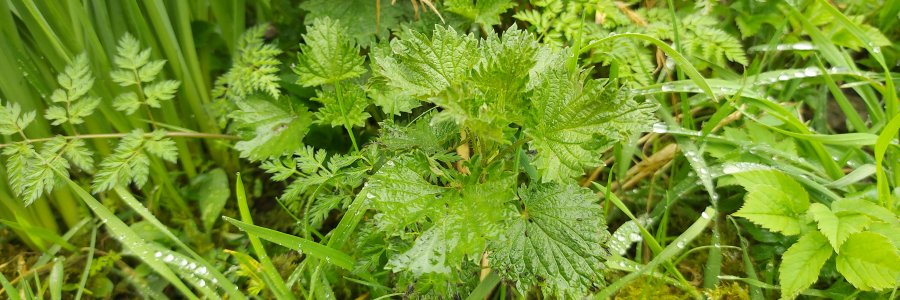Nettles remain in our opinion, THE most underrated and versatile of green plants, especially considering that most of us are warned away from the plant during childhood, due to its stings. There are proven medicinal and nutritional benefits, folklore around nettles for protection, cures and dreams, and various references in global cultural phrases about nettles . Nettles are possibly one of the most well known plants around the world.
In this article, we present a few ways in which nettles are known to be useful, and some further reading references to whet your appetite for befriending nettles.
Trex Explore would love to tell you more about the plant and teach you practically about its lost utility!
Urtica Dioica (and related dead-nettle cousins) really should be treasured. I have my own carefully tended patch in the garden!
Use as a Fibre:
Strong core fibres can be twisted to form basic cordage, from which further rope can be produced. Our friends at Woodland Survival Craft have even demonstrated towing a car with nettle cord!
If carded between fine-toothed combs, as with raw wool, the nettle fibres can be turned into a fine thread from which fabric can be produced. This fabric is both soft and strong, and (from technical detail) has been compared equal to Egyptian cotton.
Soaked fibres can be used, by drying and pressing, similar to reeds to make a form of paper.
If the leaves are boiled, the resulting green liquid makes a strong dye, possibly as reputedly worn by Robin Hood and company.
Use for Wellness:
Whilst we are not medical professionals and cannot advise you in your personal care, the following pharmacological behaviours have been recorded by a number of different sources for centuries, and scientific research continues to find further health benefits.
- Antioxidant (preventing cell damage)
- Anti-inflamatory (to reduce swelling)
- Atringent (to close wounds)
- Analygesic (for pain relief)
- Diuretic (for detoxifying)
- Particularly high in vitamin K (useful for blood clotting)
- The leaves' iron content is more available than in spinach for absorbtion in digestion
- Found to be good for relieving respiratory illness, menstrual aches, arthritis, kidney disorder...
Use in Foods:
Reputedly more iron than equivalent spinach, more vitamin C than equivalent orange, plus vitamin K (for bones/arthritus), vitamin A (good vision), folic acid, as well as protein and plant fibres. There are folklore and traditional remedies across the world, which suggest nettles can be used to support just about everything around the body! Not all the above nutritional component statements are accurate or valid, however the wide and traditional use of nettles continues in foodstuffs as follows:
- Vegetarian rennet for cheese making
- Soup/Stew, traditionally with potato and onion, but possible also with garlic (wild or cultivated)
- Tea, from dried or fresh leaves
- Boiled vegetable, as a spinach substitute
- Nettle beer, often brewed with other herbs (such as cleavers, yarrow, arrowroot, burdock root, hogweed seed), with ginger or lemon, or in a simpler recipe
- The stranded seeds can be dried and ground as a flour substitute or dried herb, or can be used fresh as a garnish, even turned into a pesto if you can collect enough.
Further Reading & External References:
- https://botanical.com/botanical/mgmh/n/nettle03.html
- https://pmc.ncbi.nlm.nih.gov/articles/PMC9253158/
- https://breconbeaconsforaging.com/books/
- https://www.icysedgwick.com/nettles-folklore/
- https://rivercottage.net/recipes/nettle-soup/

